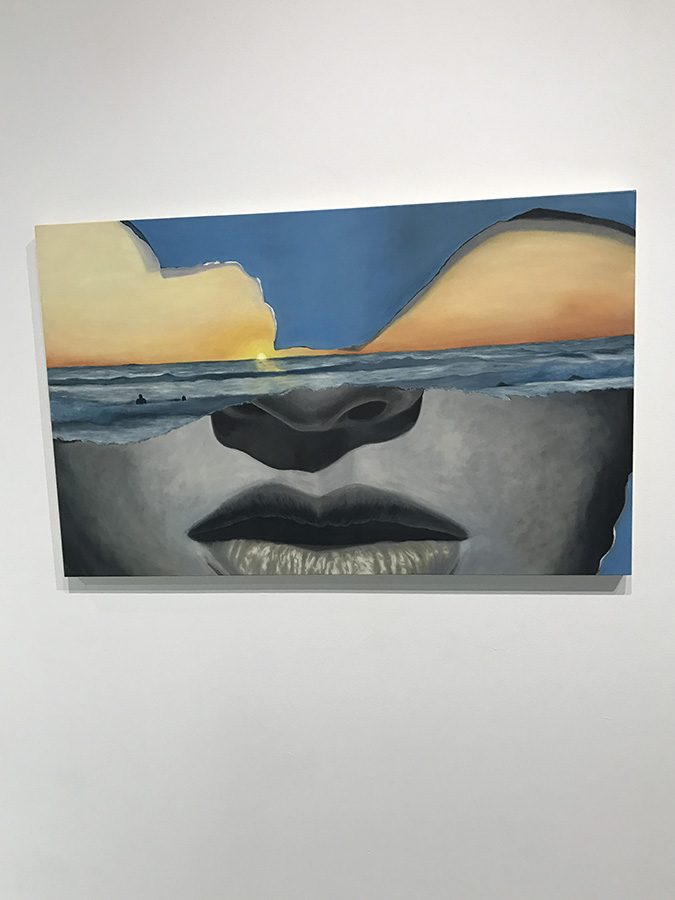Students and faculty from the School of Art + Design collaborated to submit various works for the newest Downtown Gallery exhibit, Every Which Way.
Every Which Way is part of San Diego State’s annual celebration of the “Common Experience,” a campus-wide movement that aims to connect students, faculty and staff through the exploration of relevant and current contemporary themes.
Every Which Way is the third exhibit in the annual series and is based on the Common Experience’s current cycle, “Experience Movement.”
The exhibit is featured in the Downtown Gallery through April 9.
Every Which Way is sponsored by the Common Experience, the School of Art + Design, the College for Professional Studies and Fine Arts, Arts Alive and the University’s Art Council.
Admission is free and open to the public. The exhibition also features a series of pop-up programs at the Downtown Gallery that allow the public to interact with the art pieces.
The exhibit focuses on current political and social issues that are prevalent in our society today. These issues range from climate change to self-realization to sexuality and even to our culture’s ever-changing social landscape.
Each artist’s technique is unique and thought provoking. There are no two pieces alike throughout the entire exhibit.
Upon entering the exhibit, one passes through motion-sensor beaded curtains as uplifting music plays.These beads are actually an art installation and serve as a piece in the exhibit as well.
Graphic design professor Arzu Ozkal designed another one of the interactive pieces in the exhibit.
Her piece titled “Design is Poetry/Chaos/Movement,” is made out of sheet metal and magnets. The open-ended piece invites visitors to rearrange the magnets whichever way they choose.
The magnets include cut-outs of buildings, abstract shapes and words such as, “movement,” “chaos” and “political.”
According to the artist, the purpose of the piece is to focus on the process of creation, as opposed to the main focus being on the final product.
Another piece, entitled “Plexus,” by School of Art + Design graduate student Cathy Nguyen, explores the concept of disorder within design. The three-dimensional piece is made out of triangular archival digital prints with polymer plate letterpress.
Nguyen describes the piece as a triangular accordion book.
Each triangular shape consists of quotes from the famous authors Jorge Luis Borges and Lewis Carroll. The piece “gives the statements new and unexpected meaning, allowing the viewer to follow their own visual path.”
The quotes found within the piece include “I can’t explain myself because I’m not myself” and “Begin at the beginning and go on till you come to the end, then stop.”
“It’s so fun being able to go to a gallery filled with your peers’ artwork,” La Mesa resident Kat Stange said. “It gives insight to how they view the same world and the city you live in, even though you don’t know them.”
Twelve students collaborated to create a work to showcase various “Issue Badges,” that deal with current issues in our society.
These issue badges include, “The Effects of Advertising,” “The Dakota Access Pipeline,” “Homelessness,” “Driving Under the Influence” and many more.Each badge is made from a combination of copper, brass and nickel silver.
For example, “Issue Badge: Water Rights” by Isabelle Maynard is demonstrated by a copper and brass badge of our Earth.
“Reverting Back,” an oil on canvas painting by School of Art + Design student Evelyn Jarrous, explores her “sense of urgency” that the planet must default back to nature before we dispose of it completely. Her colorful piece reflects on society’s need to respect and protect our planet.
School of Art + Design student Gustavo Mendoza’s piece, “Common Goal,” made out of graphite and charcoal on paper demonstrates the idea of people’s “chaotic physical struggle.”
The figures depicted in “Common Goal” are faceless and without identities in order to showcase “everyone and no one in particular.”
The piece depicts an individual’s internal struggle, while connecting them to mutual chaos.
“I enjoyed how the artists spoke about the injustices of today’s society,” Palm Desert resident Madison Delgado said. “The artists took the ugly parts of society and made them into beautiful pieces.”












